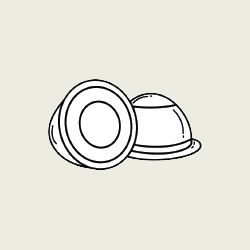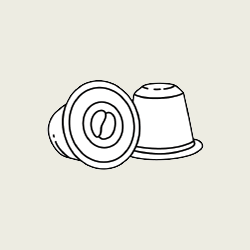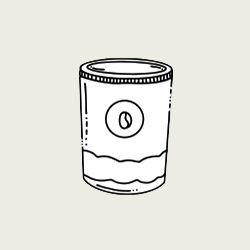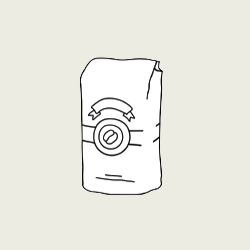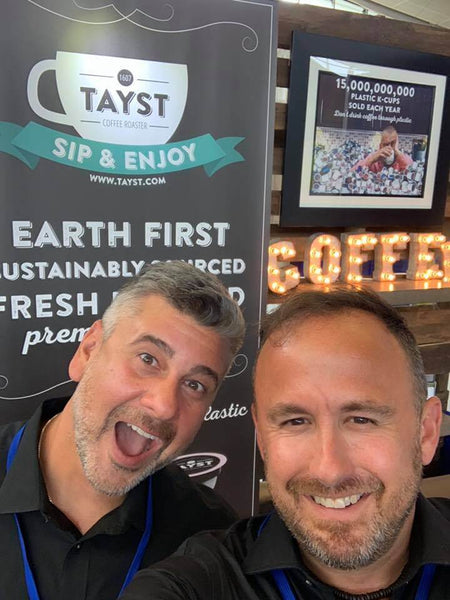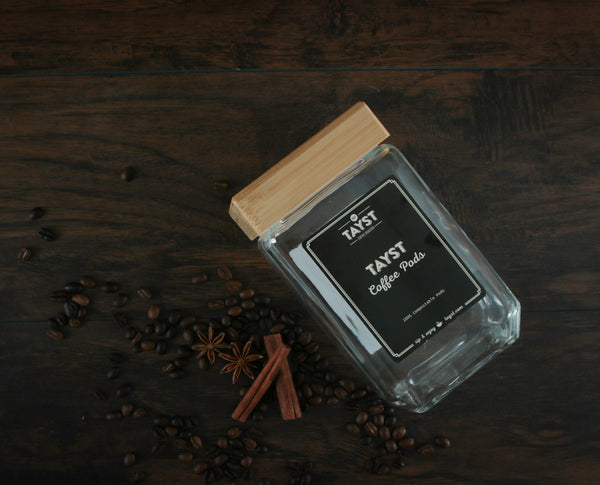Here at Tayst, we are committed to protecting our environment, which is why all of our single-serve pods and packaging are compostable*, sustainable, and eco-friendly.
What is Compost?
Compost is organic matter that has been decomposed and can be recycled to enrich soil and fertilize plants. We all want to do our part to reduce our carbon footprint and composting is a simple, cost-effective way to cut down on waste and show your garden some love.

Getting started is easy; don’t over complicate it. There are countless ingredients that can be utilized in your compost system. Some common examples that you are likely to find around (or right outside) your home include: leaves, cardboard, dry cat and dog food, dryer lint, and food waste items, including our favorite...coffee! Reference a full list of carbon and nitrogen ingredients that are compostable* to keep your home compost healthy. Once you gather your ingredients, just pile your compost together and keep it moist.
Coffee grounds are actually a valuable addition to your compost pile because they are a great source of nitrogen. With our innovative single-use pods you can enjoy the convenience of your Keurig guilt-free knowing that the entire pod can be recycled right back into the earth. It’s as easy as throwing your used Tayst pods right into the compost. The ring of the pod might take a little longer to break down, so if you want a faster turnaround in your compost pile we recommend separating the coffee mesh from the ring before adding it.
Composting is also a good way to recycle leaves and other yard waste. Instead of paying a company to haul away leaves, you can compost the leaves and return the nutrients to your garden. Instead of buying peat moss, save money, and make your own compost!
To keep up your home composting system, you’ll want to keep adding to it. Make sure you have a good ratio of wet and dry ingredients to keep it moist but not sopping wet. If you can, keep it covered with anything you have laying around (bubble wrap, cardboard, carpet, etc.). Every couple of weeks you’ll want to add some movement to it, so wear gloves or use a shovel to turn the compost over, mixing it well.
It’s easy enough to start a pile going in your backyard, but we do understand some people might want something with a little more structure. For a simple composting bin, this 216 Gallon Adjustable Bin is an affordable option but if you’re looking for something slightly more elevated than that there are plenty of tumbling compost bins on the market.
How Long Does It Take to Produce Compost?
The amount of time needed to produce compost depends on several factors, including the size of the compost pile, the types of materials, the surface area of the materials, and the number of times the pile is turned.
For most efficient composting, use a pile that is between 3 feet cubed and 5 feet cubed (27-125 cu. ft.). This allows the center of the pile to heat up sufficiently to break down materials.
Smaller piles can be made but will take longer to produce finished compost. Larger piles can be made by increasing the length of the pile but limiting the height and the depth to 5 feet tall by 5 feet deep; however, large piles are limited by a person’s ability to turn the materials. You may also want to have two piles, one for finished compost ready to use in the garden, and the other for unfinished compost.
What Can You Do With Compost?
We’re so glad you asked! Compost is extremely nutrient rich so gardening with compost is a natural plan of action. You can incorporate compost into your garden as you prepare the soil in the spring. Cover the area with 3-4 inches of soil and till it into at least the upper 6 inches of soil. Add compost to the soil in vegetable gardens, annual flower beds, and around new perennials as they are planted.
You may also use compost as mulch around flower beds, vegetable gardens, or around trees or shrubs in landscape beds. Apply a 3-inch layer. Be careful not to apply mulch close to the main stem or trunk of the plant.
Another fun way to incorporate Tayst compostable pods* into your garden is to make seedlings with them! One of our creative customers, Sue Dufon of Michigan, has demonstrated how you can also use your Tayst pods as planters to start a home garden after enjoying a delicious cup of coffee.

Sue was able to successfully sprout a variety of different vegetables and greens. She also noted that she mixed the used coffee grounds from the pods with the soil to provide additional nutrients to the plants.
The best part? You don’t have to worry about a hassle when it comes time to transfer your plants! Tayst’s compostable pods* can be transported directly into the ground or a larger pot. We recommend removing the ring before planting the pod in the ground, as it may restrict plant growth.

